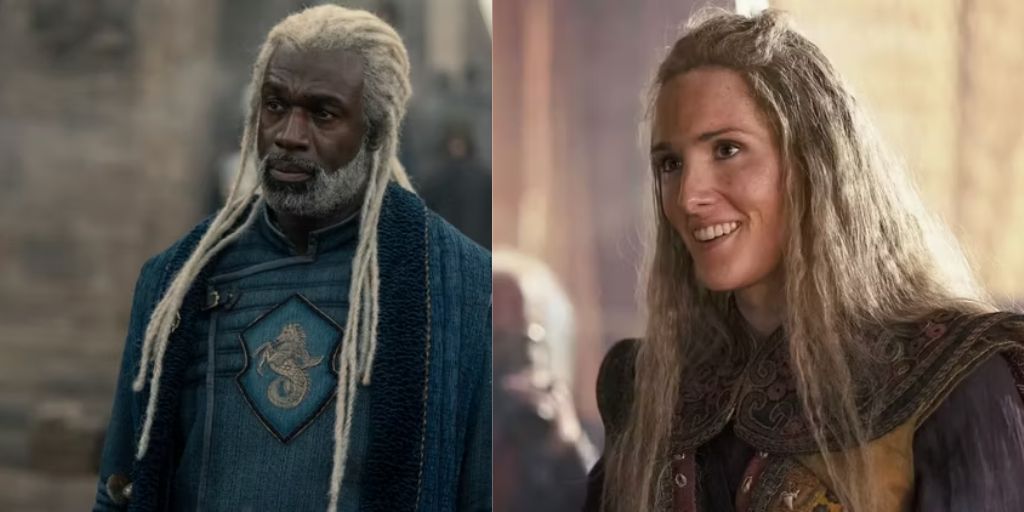The Dance of the Dragons is one of the most tragic conflicts in Westeros, and “House of the Dragon” captures its horrors well. Of all the battles in this war, none highlight the devastation more than the Battle of the Gullet. This clash brings two long-running campaigns to their peak in a massive naval fight, which also features more dragons than any other battle in the conflict.
While the dragon fights are grand, both sides pay a heavy price. One death in particular is a huge political loss for the Blacks. The Greens’ leader had already been evacuated with secret help, raising questions about why the battle was fought in the first place. However, with so many lives lost, neither side seems eager to reflect on it.
The Gullet Marks the Height of the Early War
Though the show’s timeline isn’t entirely clear, the book Fire and Blood states that the Battle of the Gullet happens nine months after the late king’s death. We’ve already seen the horrors of war at Rook’s Rest, where dragons fought for the first time.
The naval fight for King’s Landing serves as the final chapter in a campaign that originally seemed unlikely for the Blacks. Both sides spent months gathering their forces, knowing that the victor would have a clear path to the Iron Throne.
The Blacks’ biggest advantage, aside from their dragons, was the fleet of House Velaryon, which they used to block the capital by sea. In an attempt to break this, the Greens turned to Sharako Lohar and her pirates, the only force able to challenge the Velaryon fleet.
Sharako, knowing the dragons were the main threat, launched a surprise attack while the Velaryons’ ships were still anchored at Spicetown. The financial gain from attacking this wealthy port was also a clear motivation.
On the other side, the Blacks had gathered more dragons than any other time in the war. With Sunfyre injured and Vhagar occupied, the Greens could only deploy Dreamfyre. However, Helaena was an inexperienced rider.
In the books, the Blacks had four dragonseeds, but the show replaced one of them with Rhaena, who does not ride a dragon in the books. Since Daemon was still busy in the Riverlands and Rhaenyra could not risk her life in battle, her eldest son had to lead the attack.
Both Sides Have Wins in the Gullet
At first, things went well for the Greens. Using the sun to stay hidden from the shore, Lohar caught the Velaryons by surprise, sinking a third of their fleet. After landing, they celebrated by looting and burning Spicetown and High Tide, the seat of Corlys Velaryon. The destruction was so severe that the Velaryons never regained their former status, and Spicetown was never rebuilt.

But everything changed when the dragons finally arrived. Jacaerys led the charge, with the rest of the dragons following. For hours, they attacked the Braavosi fleet without mercy, destroying more than sixty ships. This crushed the morale of the enemy sailors, forcing Lohar to retreat.
However, before leaving, the Greens managed to deal a painful blow to the Blacks. During a dive attack, Jace’s dragon Vermax was struck by a grappling hook. This caused Vermax to crash into the sea and sink, tangled in the wreckage. Though Jace leaped to safety, he was soon killed by a crossbow bolt to the throat.
The Gullet Reflects the Greater War
Throughout House of the Dragon, the fear of total destruction has haunted both sides. This theme has appeared on a smaller scale with the Cargyll twins, but season three will push it further.
As the war enters a new phase, the Battle of the Gullet serves as a stark warning. Ironically, these heavy losses are likely to be ignored by both sides, driven by fear that they were for nothing.
In terms of numbers, the winner is clear. The Triarchy was shattered and no longer played a role in the Dance of the Dragons. The way to King’s Landing was now open.
However, the death of Jacaerys was a major blow to Rhaenyra, both politically and personally. In the show, this will likely feel even more tragic, as Jacaerys has been shown as a promising heir through his close relationship with his mother.
Despite this, the battle does not bring a clear end to the war. Aegon II had already escaped, preventing Rhaenyra from claiming a decisive victory. Even if Aegon had been killed, Aemond and Vhagar remained as significant threats.
The war continues to raise the question of why both sides keep fighting when they lose everything they care about. Corlys Velaryon, who has suffered greatly, sums up the battle perfectly: “If this be victory, I pray I never win another.”





